The compact SUV segment is arguably the most crowded and competitive in the automotive market, yet two models consistently rise to the top as perennial best-sellers: the Subaru Forester and the Honda CR-V. Both vehicles have been integral players in this segment for more than two decades, setting benchmarks for practicality, technology, safety, and value. Their enduring popularity stems from a blend of approachable versatility and a focus on real-world usability that appeals to a broad spectrum of drivers.
For consumers navigating the complexities of choosing a new vehicle, an in-depth, unbiased comparison is essential. This article, adopting a comprehensive and data-driven approach, delves into the specific attributes that contribute to the consistent success of these two compact crossover titans. We aim to empower prospective buyers with the actionable insights needed to make an informed purchasing decision, free from marketing hype.
We will meticulously evaluate the Subaru Forester and Honda CR-V across several critical categories, examining their performance, fuel efficiency, safety innovations, interior appointments, and technological offerings. By dissecting the nuanced differences and distinct advantages each model presents, we uncover why these two popular SUVs remain at the pinnacle of their class, year after year.
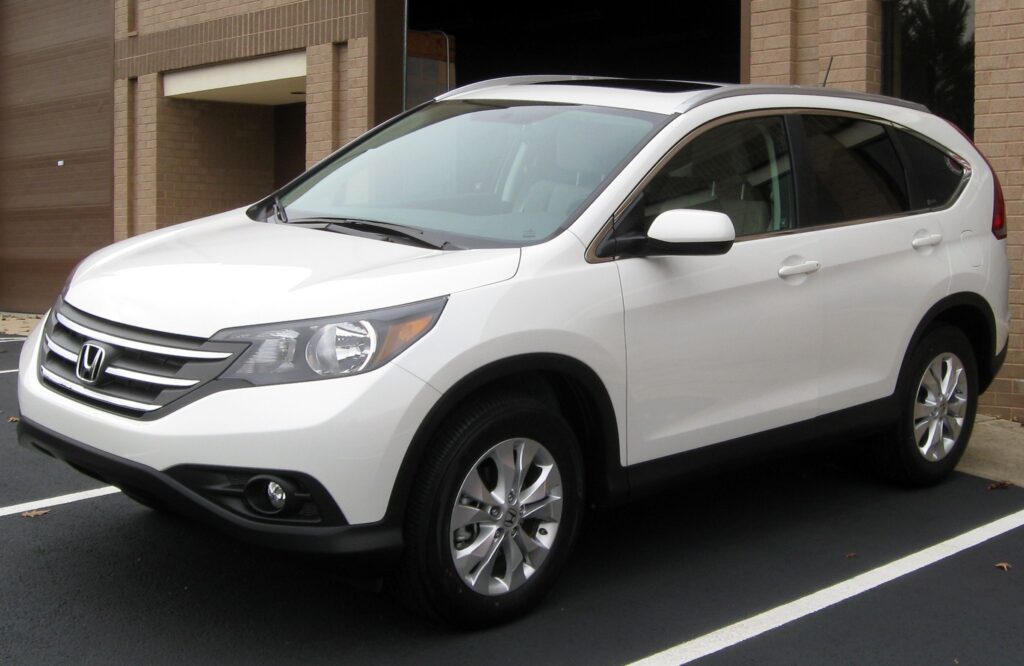
1. **Engine Performance & Dynamics (Gasoline Models)**
At the heart of any vehicle lies its powertrain, and here the Subaru Forester and Honda CR-V present distinct philosophies for their gasoline-only variants. The 2023 Honda CR-V is powered by a turbocharged 1.5-liter inline-four engine, generating 190 horsepower and 179 lb-ft of torque. In contrast, the 2023 Subaru Forester features a 2.5-liter flat-four, producing 182 horsepower and 176 lb-ft of torque.
While the 2023 Forester, in some configurations, offered a slight edge in raw acceleration, clocking 0-60 mph in 8.5 seconds (or 8.1 seconds for the Wilderness trim) compared to the CR-V’s 8.7 seconds, the landscape shifts with the latest models. The 2025 Forester’s base engine, a four-cylinder producing 180 horsepower, achieves 0 to 60 mph in a slower 9.2 seconds. This is notably less potent than the 2025 Honda CR-V’s 190-horsepower turbocharged four-cylinder, which offers acceleration that is “at least a second quicker than the Subaru, both at the test track and in the real world.”
Beyond raw numbers, the driving feel of these engines also differentiates the two. MotorTrend staff noted that the CR-V’s 1.5-liter I-4 “feels better, emitting less noise and vibration while delivering its turbocharged torque lower down in the rev range.” This contributes to a more refined and responsive experience in everyday driving situations, an important factor for many consumers.
Both vehicles utilize a Continuously Variable Transmission (CVT) automatic, but their execution differs. The Honda’s CVT is praised for not “sling[ing] the revs about or attempt[ing] to mimic gear shifts like the Subaru’s does,” leading to a smoother and more consistent power delivery. This contrast in CVT behavior can significantly impact the perceived refinement and driving pleasure.
Ultimately, when considering the overall driving experience, Edmunds’ automotive experts concluded that “regardless of powertrain, the answer is the CR-V. It’s quieter and has sharper steering. The ride is more comfortable, yet it also handles better.” While the Forester “is fine and will get you where you’re going,” the CR-V is described as being “more than that,” indicating a more engaging and enjoyable daily drive.
Car Model Information: 2008 Honda CR-V EX-L
Name: Honda CR-V
Caption: 2023 Honda CR-V e:HEV
Manufacturer: Honda
Aka: Honda Breeze (China, 2019–present)
Production: 1995–present
Class: Compact crossover SUV
BodyStyle: Sport utility vehicle
Layout: Front-engine, front-wheel-drive layout,Front-engine, four-wheel-drive layout
Chassis: Unibody
Predecessor: Honda Crossroad
Successor: Honda ZR-V
Categories: 2000s cars, 2010s cars, 2020s cars, All-wheel-drive vehicles, All Wikipedia articles written in British English
Summary: The Honda CR-V (also sold as the Honda Breeze in China since 2019) is a compact crossover SUV manufactured by Japanese automaker Honda since 1995. Initial models of the CR-V were built using the same platform as the Civic.
Honda began producing the CR-V in Japan and United Kingdom, for worldwide markets, adding North American manufacturing sites in the United States and Mexico in 2007, and Canada in 2012. The CR-V is also produced in Wuhan for the Chinese market by Dongfeng Honda, and also marketed as the Breeze in China for the version produced at Guangzhou by Guangqi Honda.
Honda states that “CR-V” stands for “Comfortable Runabout Vehicle,” while the term “Compact Recreational Vehicle” was used in a British car review article that was republished by Honda, associating the model name with the Sports Utility Vehicle abbreviation of SU-V.
As of 2022, the CR-V is positioned between the smaller ZR-V (marketed as HR-V in North America) — with which the CR-V shares a platform — and the larger North American market Passport/Pilot or the Chinese market Avancier/UR-V. It is currently Honda’s best-selling vehicle in the world, and the second best-selling SUV globally in 2020.
Get more information about: Honda CR-V
Buying a high-performing used car >>>
Brand: Honda Model: CR-V
Price: $9,385 Mileage: 137,310 mi.
Read more about: Steer Clear: 14 Vehicles Notorious for Early Breakdowns Before 50,000 Miles
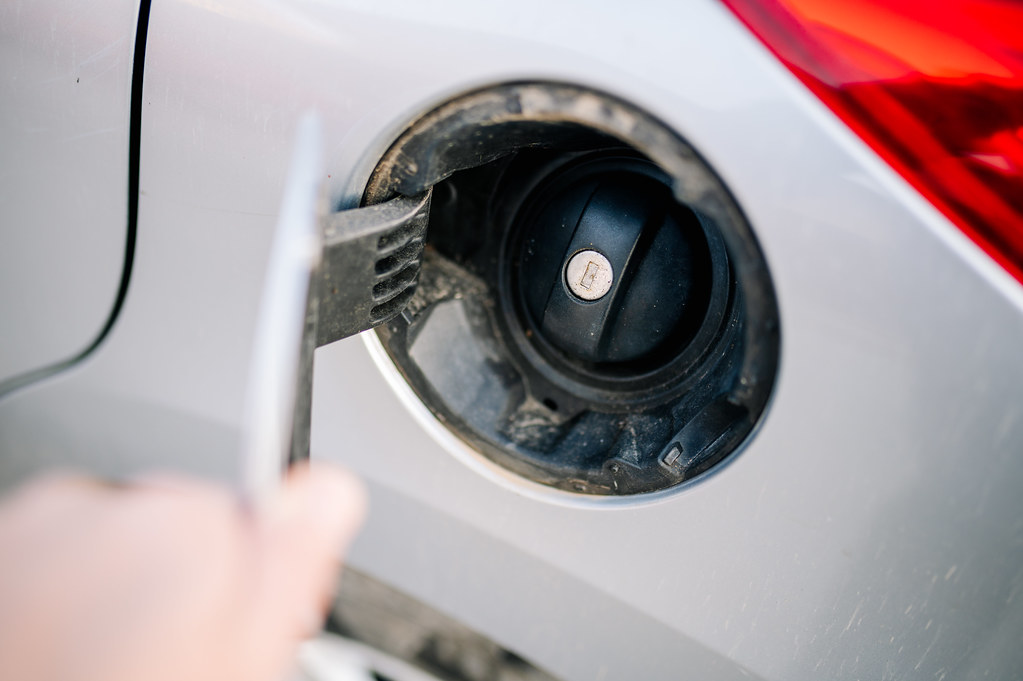
2. **Fuel Efficiency (Gasoline Models)**
Fuel economy remains a top priority for compact SUV buyers, and the Honda CR-V generally demonstrates a slight advantage over the Subaru Forester in its gasoline-powered configurations. For 2023 models, the front-wheel-drive CR-V earned an EPA rating of 28/34 mpg city/highway, while its all-wheel-drive (AWD) counterpart achieved 27/32 mpg.
In comparison, the 2023 AWD-equipped Forester was rated at 26/33 mpg. This indicates a marginally lower city fuel economy for the Subaru in its standard AWD setup. The efficiency gap widens when considering specialized trims, as the Forester Wilderness, with its off-road enhancements, saw its ratings drop to 25/28 mpg, making it the least fuel-efficient gasoline Forester variant.
However, for the most recent iterations, the fuel economy figures are remarkably close. Edmunds reported that for the 2025 models, “fuel economy is basically even between the Forester and the turbocharged CR-V.” Consumers can expect “an EPA-estimated 28-29 mpg combined for the Forester and CR-V depending on trim level,” suggesting that the differences in gasoline efficiency have largely converged.
Despite this equalization for 2025, it is important to note that the CR-V previously edged ahead slightly in overall gasoline efficiency. This was often attributed to its turbocharged engine and the availability of a front-wheel-drive option, which the Forester does not offer, as all Subaru Forester models come standard with AWD.
Car Model Information: 2008 Honda CR-V EX-L
Name: Honda CR-V
Caption: 2023 Honda CR-V e:HEV
Manufacturer: Honda
Aka: Honda Breeze (China, 2019–present)
Production: 1995–present
Class: Compact crossover SUV
BodyStyle: Sport utility vehicle
Layout: Front-engine, front-wheel-drive layout,Front-engine, four-wheel-drive layout
Chassis: Unibody
Predecessor: Honda Crossroad
Successor: Honda ZR-V
Categories: 2000s cars, 2010s cars, 2020s cars, All-wheel-drive vehicles, All Wikipedia articles written in British English
Summary: The Honda CR-V (also sold as the Honda Breeze in China since 2019) is a compact crossover SUV manufactured by Japanese automaker Honda since 1995. Initial models of the CR-V were built using the same platform as the Civic.
Honda began producing the CR-V in Japan and United Kingdom, for worldwide markets, adding North American manufacturing sites in the United States and Mexico in 2007, and Canada in 2012. The CR-V is also produced in Wuhan for the Chinese market by Dongfeng Honda, and also marketed as the Breeze in China for the version produced at Guangzhou by Guangqi Honda.
Honda states that “CR-V” stands for “Comfortable Runabout Vehicle,” while the term “Compact Recreational Vehicle” was used in a British car review article that was republished by Honda, associating the model name with the Sports Utility Vehicle abbreviation of SU-V.
As of 2022, the CR-V is positioned between the smaller ZR-V (marketed as HR-V in North America) — with which the CR-V shares a platform — and the larger North American market Passport/Pilot or the Chinese market Avancier/UR-V. It is currently Honda’s best-selling vehicle in the world, and the second best-selling SUV globally in 2020.
Get more information about: Honda CR-V
Buying a high-performing used car >>>
Brand: Honda Model: CR-V
Price: $9,385 Mileage: 137,310 mi.
Read more about: Steer Clear: 14 Vehicles Notorious for Early Breakdowns Before 50,000 Miles
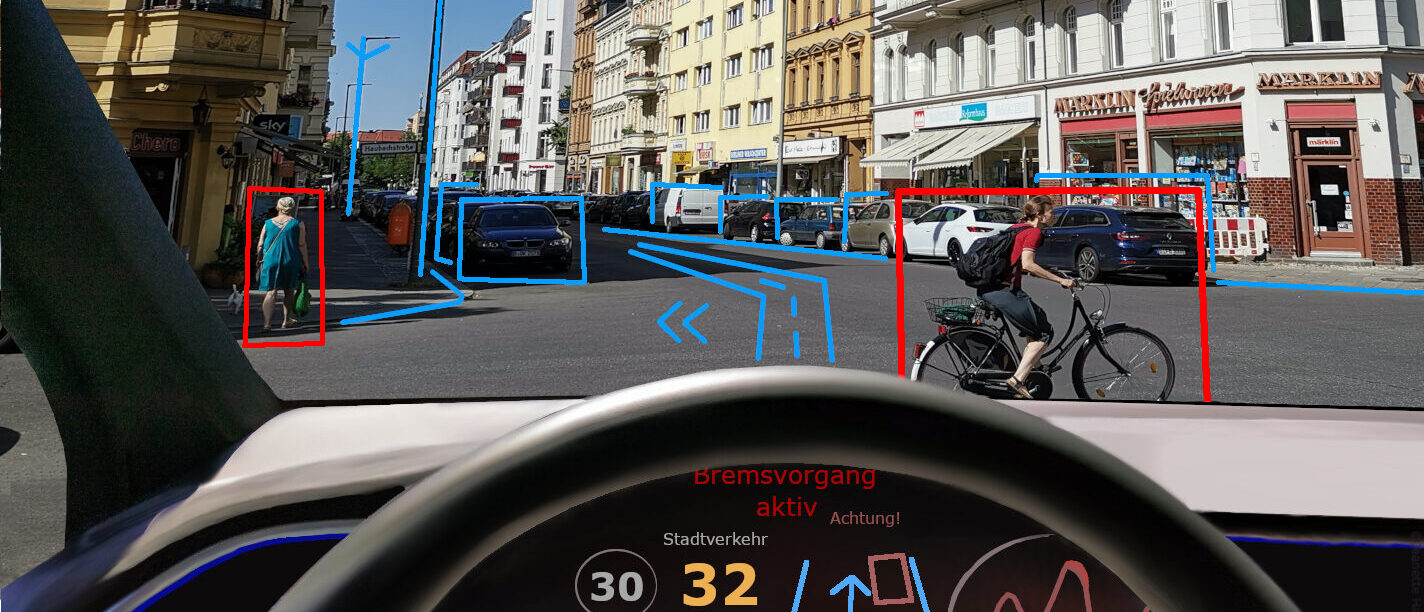
3. **Advanced Safety & Driver-Assist Systems**
In an era where safety features are increasingly sophisticated, both the Subaru Forester and Honda CR-V demonstrate a strong commitment to occupant protection and driver assistance. It is highly commendable that even regular SUVs now include advanced driver-assist and active safety features that were previously exclusive to luxury vehicles. Every grade of both the Subaru Forester and Honda CR-V comes equipped with adaptive cruise control, lane keep assist, and front automatic emergency braking, providing a robust foundation of standard safety.
However, a crucial distinction exists in the breadth of standard features offered on entry-level models. According to MotorTrend, “only the CR-V includes blind-spot monitoring and rear cross-traffic alert, features that don’t come on basic Forester models.” This means that consumers opting for the most affordable Forester trim might miss out on these valuable situational awareness technologies, which are standard across the CR-V lineup.
In terms of user experience and system functionality, expert opinions indicate a preference for Honda’s suite. MotorTrend reviewers stated, “we prefer the functionality of the Honda Sensing suite over the Subaru EyeSight equivalent. Its operation feels smoother and more natural, and it doesn’t make all the annoying cautionary beeps that EyeSight does.” This suggests that while both systems offer similar protective capabilities, Honda’s implementation may provide a less intrusive and more intuitive driving assist experience.
For the 2025 model year, Subaru emphasizes its “EyeSight® Driver Assist Technology,” which includes “Pre-Collision Braking, Adaptive Cruise Control with Lane Centering, Lane Departure and Sway Warning, and Advanced Adaptive Lighting.” Subaru highlights that EyeSight is “standard on every Forester trim, a major advantage for budget-conscious buyers seeking top-tier safety,” and it has been “proven in real-world crash prevention scenarios and praised for user-friendliness.”
The 2025 Honda CR-V also features Honda Sensing®, offering “similar functionality” to EyeSight. However, Edmunds notes that “it’s not as seamless or customizable, and some drivers report more aggressive lane-keeping alerts.” This suggests that while both systems aim for comprehensive safety, the CR-V’s system might be perceived as less refined in its alerts and personalization options, which could influence a driver’s daily interaction with the technology.
Read more about: The Ultimate Haulers: A Deep Dive into 2025 Half-Ton Pickup Truck Towing Capacities and Features for Informed Buyers
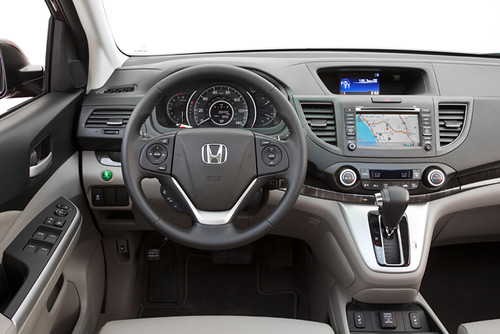
4. **Interior Design, Quality, and Ergonomics**
While both the 2023 CR-V and 2023 Forester provide functional interiors, neither has “wowed” reviewers with groundbreaking design. However, the Honda CR-V has generally “impressed us slightly more than the Subaru” in terms of its cabin aesthetics and tactile quality. Inside the Honda, a “handsome horizontal line that runs across the entire dash” is complemented by an “attractive honeycomb pattern,” lending a more cohesive and contemporary appearance. The CR-V’s interior also benefits from “nice tactile elements like the clicky HVAC control knobs and airflow toggles,” enhancing the sense of quality through user interaction.
MotorTrend reviewers noted that while the CR-V’s cabin “doesn’t blow us away” when compared to rivals like the 2023 Kia Sportage, it offers a more “up-to-date” feel and a preferred “straightforward nature” for its controls. This emphasis on clear organization and quality materials contributes to a user-friendly and aesthetically pleasing environment for daily use, which is a key aspect of consumer satisfaction.
In contrast, the Subaru Forester’s interior, even in its 2025 redesigned form, maintains a more “rugged and simple dashboard without much design flair.” While some guises of the Forester’s interior can look “upscale,” its “control scheme and overall layout is dated.” Reviewers have specifically pointed out that they “don’t love the disorganized layout of screens, dials, and buttons,” which can make the cabin feel less intuitive and modern. Although drivers “will get used to the Forester’s cabin over time,” the initial impression and overall design philosophy differ significantly from the CR-V.
The materials used in the Forester are generally described as “sturdy rather than posh,” and they “fit together well.” This unpretentious and simple approach aligns with Subaru’s brand identity but might not appeal to buyers seeking a more premium or technologically integrated interior experience. Ultimately, while subjective taste plays a role, the CR-V typically provides a cabin that feels more modern and luxurious, with controls that are both well-integrated and tactilely satisfying.
Read more about: 2025 Volkswagen ID.4: The Comprehensive CNET Guide to Its Family EV Credentials
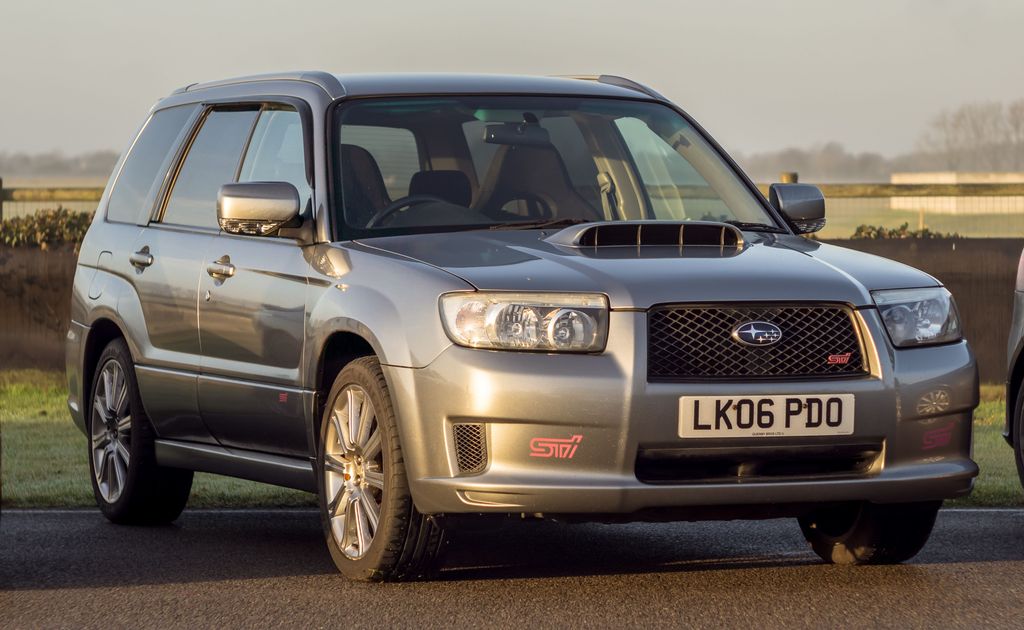
5. **Infotainment and Connectivity**
When it comes to in-car technology and infotainment, the balance between screen size, functionality, and ease of use is critical for consumer satisfaction. For the 2023 models, the Forester’s standard 6.5-inch and available 8.0-inch touchscreens, while not as large as the CR-V’s standard 7.0-inch and available 9.0-inch equivalents, were deemed “very easy to use.” Furthermore, most Forester trims included a secondary 6.3-inch display higher on the dashboard, keeping useful information within the driver’s line of sight.
However, with the 2025 redesign, the Forester gained a prominent 11.4-inch portrait-oriented touchscreen on all but the base model. While impressive in size, this system has been criticized for being “slow to respond and its graphics look dated.” Reviewers noted that despite “huge icons” that are “easy to see and tap,” the system “often fails to respond quickly.” A significant drawback is that Subaru “makes you use the screen for many common climate settings,” and the screen “can take 10 to 20 seconds to respond to inputs on startup,” with wireless Apple CarPlay or Android Auto also suffering from “maddening input lag.”
In comparison, the 2025 Honda CR-V’s infotainment system, featuring a 9-inch touchscreen (standard on all but the base model, and on all CR-V Hybrids for 2026), may not look as visually striking as the Forester’s larger display, but it is often considered “better to live with.” While “running on an older version of Honda’s infotainment,” it is praised for being “easy to find everything” and, crucially, for having “no lag whether you’re using the system or Apple CarPlay/Android Auto wirelessly.”
The CR-V’s design also benefits from ergonomic considerations, with its screen “placed up higher on the dashboard where it’s easier to see while driving.” Honda’s decision to “not try to jam those controls in the screen and keeps them physical,” rather than integrating them into the touchscreen, results in a more user-friendly “interior ecosystem.” This contrasts with the Forester, where drivers might feel they “end up looking down at your lap sometimes to see the bottom of the screen (aka where the climate controls are).”
Additional technological conveniences further distinguish the two. The Honda’s “nicely rubberized” wireless charging pad, which “keeps your phone from sliding around,” is preferred over the Forester’s “slick pad without rails” which “won’t hold your phone in place if you turn, so it stops charging and bangs around the storage bin like a pinball. Not ideal.” For hybrid models, the CR-V also offers “several prominent options to track your fuel economy and see how the hybrid system is responding,” a feature that Subaru provides only through a “tiny, pixellated display in a corner of the gauge cluster.”
Car Model Information: 2025 Subaru Forester Premium
Name: Subaru Forester
Manufacturer: Subaru
Production: 1997–present
Class: Compact crossover SUV
BodyStyle: SUV
Related: Subaru Impreza
Layout: Front-engine, all-wheel drive
Predecessor: Subaru Bighorn
Categories: 2000s cars, 2010s cars, All-wheel-drive vehicles, All Wikipedia articles written in American English, All articles containing potentially dated statements
Summary: The Subaru Forester (Japanese: スバル・フォレスター, Hepburn: Subaru Foresutā) is a compact crossover SUV that has been manufactured by Subaru since 1997. The first generation was built on the platform of the Impreza in the style of a taller station wagon, a style that continued to the second generation, while the third-generation model onwards moved towards a crossover SUV design. A performance model was available for the second-generation Forester in Japan as the Forester STi.
Get more information about: Subaru Forester
Buying a high-performing used car >>>
Brand: Subaru Model: Forester
Price: $32,450 Mileage: 1,707 mi.
Read more about: Your Ultimate Checklist: 14 Essential Things to Examine During Your Used Car Test Drive
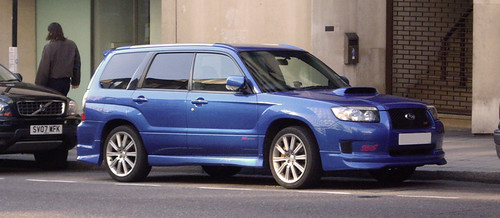
6. **Hybrid Powertrain Efficiency**
The shift towards more sustainable and economical driving has made hybrid powertrains a significant differentiator in the compact SUV segment. For 2025, Subaru finally introduced its Forester Hybrid, aiming to compete with established players like the Honda CR-V Hybrid, which has been available for some time. This new offering from Subaru pairs electric motors with a gasoline engine, primarily designed to enhance fuel usage, especially in low-speed, stop-and-go city driving conditions.
However, when examining the official EPA ratings, the Honda CR-V Hybrid typically demonstrates a notable advantage. Front-wheel-drive CR-V Hybrid models boast impressive figures of 43 mpg in the city, 36 mpg on the highway, and a combined 40 mpg. Even its all-wheel-drive (AWD) variants achieve 40 mpg city, 34 mpg highway, and a respectable 37 mpg combined. Our test vehicle for the CR-V Hybrid averaged around 36 mpg during a week of varied driving, closely aligning with these estimates.
In contrast, the 2025 Subaru Forester Hybrid, while a welcome addition to the lineup, is less economical than its Honda counterpart. EPA estimates for the Forester Hybrid stand at 35 mpg city, 34 mpg highway, and 35 mpg combined. During our testing, we managed to slightly exceed this, reaching 37 mpg in mixed driving conditions. This difference in efficiency can be partly attributed to Subaru’s engineering philosophy; it utilizes some Toyota hybrid technology but retains the gas-powered Forester’s engine and drivetrain, with an eye towards maintaining off-road capability, which can impact overall fuel economy.
It’s also worth noting that while hybrids excel in urban environments and stop-and-go traffic, neither the Forester Hybrid nor the CR-V Hybrid are ultra-efficient on long highway stretches. Drivers should generally anticipate mileage in the low 30s from either a gas or a hybrid model during extended interstate travel. This highlights that the primary fuel-saving benefits of these hybrid systems are most pronounced during daily commutes and city driving, where they can frequently switch between electric and gasoline power.
Beyond efficiency, the pricing of these hybrid models also presents a clear distinction. The CR-V Hybrid starts at a more accessible $34,650, representing a premium of just $2,000 to $3,000 over its gas-only CR-V siblings. It also offers the flexibility of a front-wheel-drive option, allowing consumers to save money and potentially use less gasoline. The Forester Hybrid, however, carries a steeper premium, starting at $36,595, with upper trims easily exceeding $40,000, making the Honda the more value-conscious choice in the hybrid segment, especially when considering its superior fuel economy figures.
Car Model Information: 2025 Subaru Forester Premium
Name: Subaru Forester
Manufacturer: Subaru
Production: 1997–present
Class: Compact crossover SUV
BodyStyle: SUV
Related: Subaru Impreza
Layout: Front-engine, all-wheel drive
Predecessor: Subaru Bighorn
Categories: 2000s cars, 2010s cars, All-wheel-drive vehicles, All Wikipedia articles written in American English, All articles containing potentially dated statements
Summary: The Subaru Forester (Japanese: スバル・フォレスター, Hepburn: Subaru Foresutā) is a compact crossover SUV that has been manufactured by Subaru since 1997. The first generation was built on the platform of the Impreza in the style of a taller station wagon, a style that continued to the second generation, while the third-generation model onwards moved towards a crossover SUV design. A performance model was available for the second-generation Forester in Japan as the Forester STi.
Get more information about: Subaru Forester
Buying a high-performing used car >>>
Brand: Subaru Model: Forester
Price: $32,450 Mileage: 1,707 mi.
Read more about: Your Definitive 2025 Guide: What to Check When Buying a Used Electric Vehicle
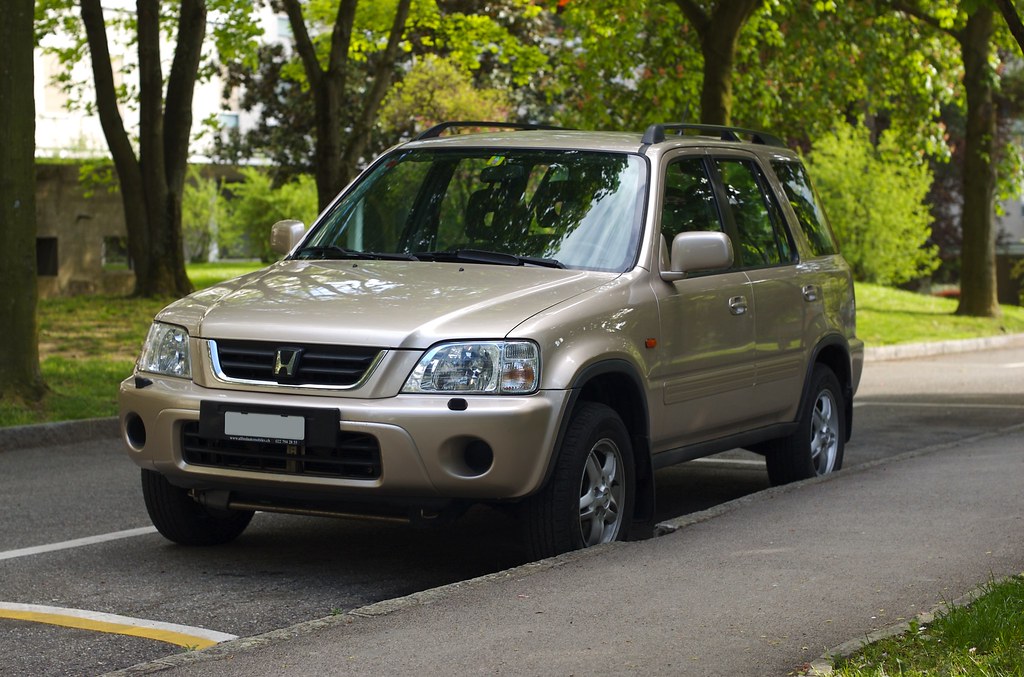
7. **Passenger Space and Comfort**
When it comes to providing a comfortable and accommodating cabin for passengers, both the Subaru Forester and Honda CR-V stand out as spacious and welcoming compact crossovers. They both feature well-shaped seats, ample legroom, and sufficient headroom for adult passengers. The choice often hinges on nuanced preferences in how space is perceived and utilized.
Specifications reveal the Forester generally offers an advantage in front headroom (41.2 inches vs. CR-V’s 40.0 inches) and front legroom (43.3 inches vs. 41.3 inches). In the rear, Forester maintains a slight edge in headroom (39.6 inches vs. 38.2 inches) and shoulder room (56.7 inches vs. 55.9 inches). These measurements suggest a slightly more generous space for occupants, particularly upfront and for overall head clearance.
However, the Honda CR-V counters with a significant advantage in rear legroom, providing 41.0 inches compared to the Forester’s 39.4 inches. This extra space can noticeably enhance comfort for adult rear passengers or growing teenagers on longer journeys, with Edmunds experts noting the CR-V as a better choice for families due to this and its overall cargo space.
Outward visibility and cabin design also influence comfort. The Forester is often praised for its “bigger windows and slimmer roof pillars,” contributing to “superior outward visibility,” which can make the cabin feel more open. Conversely, some drivers report the CR-V having “less headroom and limited visibility due to thicker rear pillars and sloped design,” potentially impacting the sense of openness. Ultimately, the Forester’s exceptional visibility and slight advantage in front and rear headroom contribute to a greater sense of command and ease of navigation.
Read more about: 2025 Volkswagen ID.4: The Comprehensive CNET Guide to Its Family EV Credentials
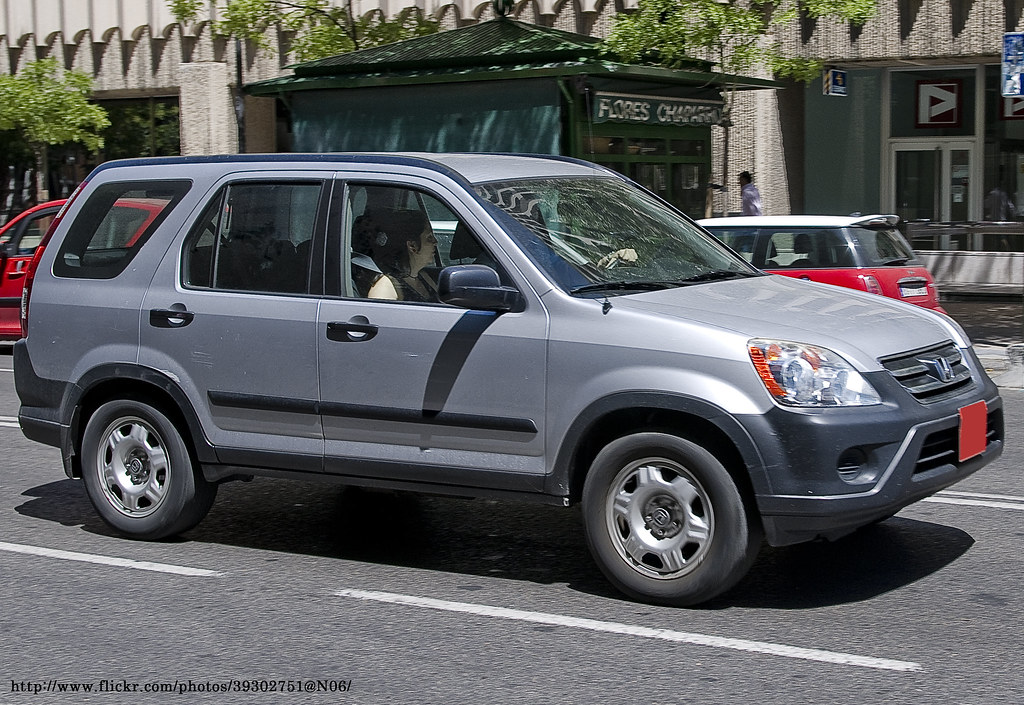
8. **Cargo Accommodation and Interior Storage**
For many compact SUV buyers, cargo accommodation is paramount. Here, the Honda CR-V often takes the lead, offering a more capacious and versatile cargo area. With rear seats in place, the CR-V boasts 39.3 cubic feet, expanding to an impressive 76.5 cubic feet with seats folded. These figures surpass the Forester’s capacity.
The 2025 Subaru Forester provides a respectable 29.6 cubic feet behind the rear seats, expanding to 74.4 cubic feet when folded. While ample for most needs, it falls short of the CR-V’s ultimate volume. Ken Ganley Subaru East highlights the Forester’s “low cargo floor” and “wide rear doors” as ideal for easy loading, even if total volume is less.
Beyond volume, interior storage enhances daily living. The CR-V receives praise for thoughtful solutions, including its “nicely rubberized” wireless charging pad. This design securely “keeps your phone from sliding around” during turns, ensuring consistent charging and minimizing distractions.
In contrast, the Forester’s wireless charging pad has been criticized for being a “slick pad without rails.” Reviewers noted it “won’t hold your phone in place if you turn, so it stops charging and bangs around the storage bin like a pinball,” which is “not ideal.” While the Forester offers “deep cup and bottle holders,” this specific flaw can annoy tech-dependent drivers.
Ultimately, the Honda CR-V’s superior maximum cargo volume and more effectively designed interior storage, particularly its secure wireless charging pad, give it a distinct advantage. This focus on maximizing utility and convenience solidifies the CR-V’s position as a highly capable hauler for those needing generous and well-organized space.
Car Model Information: 2008 Honda CR-V EX-L
Name: Honda CR-V
Caption: 2023 Honda CR-V e:HEV
Manufacturer: Honda
Aka: Honda Breeze (China, 2019–present)
Production: 1995–present
Class: Compact crossover SUV
BodyStyle: Sport utility vehicle
Layout: Front-engine, front-wheel-drive layout,Front-engine, four-wheel-drive layout
Chassis: Unibody
Predecessor: Honda Crossroad
Successor: Honda ZR-V
Categories: 2000s cars, 2010s cars, 2020s cars, All-wheel-drive vehicles, All Wikipedia articles written in British English
Summary: The Honda CR-V (also sold as the Honda Breeze in China since 2019) is a compact crossover SUV manufactured by Japanese automaker Honda since 1995. Initial models of the CR-V were built using the same platform as the Civic.
Honda began producing the CR-V in Japan and United Kingdom, for worldwide markets, adding North American manufacturing sites in the United States and Mexico in 2007, and Canada in 2012. The CR-V is also produced in Wuhan for the Chinese market by Dongfeng Honda, and also marketed as the Breeze in China for the version produced at Guangzhou by Guangqi Honda.
Honda states that “CR-V” stands for “Comfortable Runabout Vehicle,” while the term “Compact Recreational Vehicle” was used in a British car review article that was republished by Honda, associating the model name with the Sports Utility Vehicle abbreviation of SU-V.
As of 2022, the CR-V is positioned between the smaller ZR-V (marketed as HR-V in North America) — with which the CR-V shares a platform — and the larger North American market Passport/Pilot or the Chinese market Avancier/UR-V. It is currently Honda’s best-selling vehicle in the world, and the second best-selling SUV globally in 2020.
Get more information about: Honda CR-V
Buying a high-performing used car >>>
Brand: Honda Model: CR-V
Price: $9,385 Mileage: 137,310 mi.
Read more about: 2025 Honda Odyssey: An In-Depth Consumer Report on Why It Still Reigns for Families
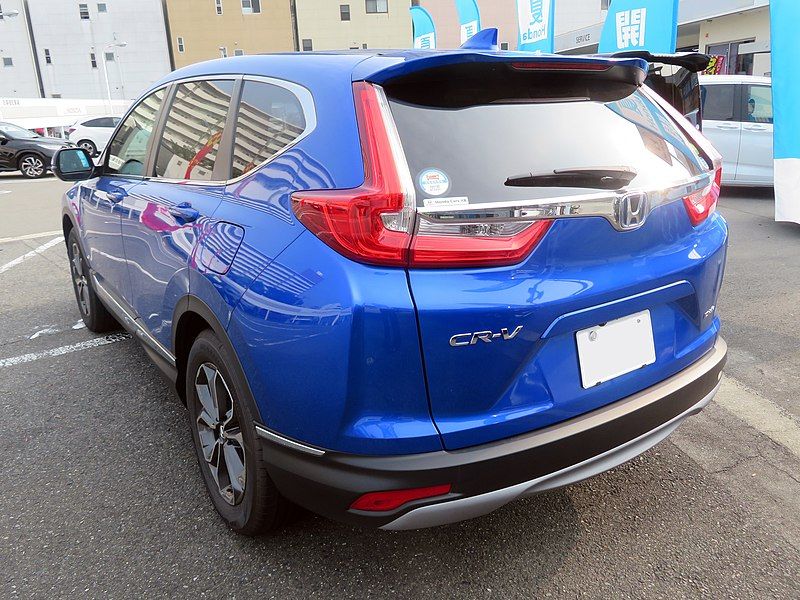
9. **Off-Road Capabilities and Standard AWD**
For those venturing off the paved path or facing challenging weather, off-road capability and a robust all-wheel-drive system are paramount. This is where the Subaru Forester, with its long-standing reputation for ruggedness and standard Symmetrical All-Wheel Drive (AWD), truly excels, distinguishing itself from the Honda CR-V.
A key advantage for the Forester is that Symmetrical AWD comes standard on every trim level, meaning buyers don’t incur extra costs for this crucial feature. In contrast, AWD is an optional upgrade for the Honda CR-V, adding to its overall price. The CR-V’s AWD system, while capable for light conditions, lacks the mechanical symmetry and advanced torque distribution that makes Subaru’s system so effective on more challenging surfaces.
Subaru further amplifies the Forester’s adventurous spirit with its popular Wilderness off-road trim. This variant significantly enhances capabilities, boosting ground clearance from 8.7 to 9.2 inches for improved approach, breakover, and departure angles. It also features a shorter final drive ratio for low-end torque, a reprogrammed X-Mode AWD system, and 17-inch wheels with all-terrain tires.
The Forester Wilderness additionally offers water-repellent interior upholstery, a 180-degree front camera view for tricky paths, and distinctive copper-finish accents. Crucially, it doubles the towing capacity to 3,000 pounds. While Honda may introduce a TrailSport package for the CR-V in 2026, it is not as comprehensively equipped for serious off-roading as the established Forester Wilderness.
Moreover, the Forester boasts a tighter turning diameter of 35.4 feet, aiding maneuvers on tight trails or in congested lots. For drivers prioritizing robust off-road prowess, superior traction in adverse conditions, and a vehicle built for adventure, the Subaru Forester, particularly its Wilderness trim, offers a compelling package that surpasses the CR-V’s more on-road oriented capabilities.
Car Model Information: 2025 Subaru Forester Premium
Name: Subaru Forester
Manufacturer: Subaru
Production: 1997–present
Class: Compact crossover SUV
BodyStyle: SUV
Related: Subaru Impreza
Layout: Front-engine, all-wheel drive
Predecessor: Subaru Bighorn
Categories: 2000s cars, 2010s cars, All-wheel-drive vehicles, All Wikipedia articles written in American English, All articles containing potentially dated statements
Summary: The Subaru Forester (Japanese: スバル・フォレスター, Hepburn: Subaru Foresutā) is a compact crossover SUV that has been manufactured by Subaru since 1997. The first generation was built on the platform of the Impreza in the style of a taller station wagon, a style that continued to the second generation, while the third-generation model onwards moved towards a crossover SUV design. A performance model was available for the second-generation Forester in Japan as the Forester STi.
Get more information about: Subaru Forester
Buying a high-performing used car >>>
Brand: Subaru Model: Forester
Price: $32,450 Mileage: 1,707 mi.
Read more about: Is the 2025 Audi Q5 Still the Best for Small Luxury Buyers? An In-Depth Car and Driver Review

10. **Pricing, Value Proposition, and Long-Term Ownership**
Evaluating the overall value of the Subaru Forester and Honda CR-V demands a nuanced look at pricing, standard features, and long-term ownership. While the 2023 Forester initially had a significant price advantage, the 2025 models show closer convergence. The 2025 Forester Base starts at $31,415, nearly mirroring the 2025 CR-V LX at $31,495.
A key differentiator remains Forester’s standard Symmetrical All-Wheel Drive across all trims, a feature that’s an additional cost on the CR-V. This positions AWD-equipped Forester trims as a better value at entry levels. The Forester also offers a broader range of trim levels, from Premium to Touring, allowing buyers to match features with their budget precisely.
For hybrid variants, the dynamic shifts. The 2025 CR-V Hybrid starts at $34,650, generally less expensive than the 2025 Forester Hybrid, which begins at $36,595. Honda’s approach allows for a smaller premium for hybrid technology and offers a front-wheel-drive hybrid option, making it a more budget-friendly choice for initial investment and pure fuel savings, even though the Forester Hybrid’s top Touring trim adds exclusive luxury features like a surround-view camera and ventilated front seats.
Beyond the sticker price, long-term ownership costs and resale value are crucial. Both vehicles boast stellar reputations for reliability. However, Subaru consistently ranks high in long-term reliability and holds one of the highest resale values. The Forester is noted for durable components and an engine design promoting longevity, often leading to lower maintenance costs. Both provide standard 3-year/36,000-mile basic and 5-year/60,000-mile powertrain warranties, alongside 5-star NHTSA safety ratings.
Ultimately, the choice hinges on individual priorities. Edmunds experts lean towards the CR-V for its enjoyable driving and superior hybrid efficiency. Yet, the Forester offers compelling value for those prioritizing standard AWD, exceptional visibility, straightforward controls, and robust adventure-ready capability. Its commitment to strong standard features, proven reliability, and high resale value makes it a smart long-term investment for a specific demographic, even if the CR-V offers a slightly more refined daily experience and a more accessible hybrid entry point.
Car Model Information: 2025 Subaru Forester Premium
Name: Subaru Forester
Manufacturer: Subaru
Production: 1997–present
Class: Compact crossover SUV
BodyStyle: SUV
Related: Subaru Impreza
Layout: Front-engine, all-wheel drive
Predecessor: Subaru Bighorn
Categories: 2000s cars, 2010s cars, All-wheel-drive vehicles, All Wikipedia articles written in American English, All articles containing potentially dated statements
Summary: The Subaru Forester (Japanese: スバル・フォレスター, Hepburn: Subaru Foresutā) is a compact crossover SUV that has been manufactured by Subaru since 1997. The first generation was built on the platform of the Impreza in the style of a taller station wagon, a style that continued to the second generation, while the third-generation model onwards moved towards a crossover SUV design. A performance model was available for the second-generation Forester in Japan as the Forester STi.
Get more information about: Subaru Forester
Buying a high-performing used car >>>
Brand: Subaru Model: Forester
Price: $32,450 Mileage: 1,707 mi.
Read more about: Navigating the 2025 Car Warranty Changes: A Consumer Reports Guide to Protecting Your Used Car Investment
In the spirited contest between the Subaru Forester and the Honda CR-V, it’s clear that both compact SUVs have earned their place as perennial best-sellers by consistently delivering practicality, safety, and value. Each vehicle presents a compelling case, catering to distinct priorities and lifestyles. The CR-V offers a more refined driving experience, superior hybrid fuel economy, and a slightly more contemporary interior feel, making it an excellent choice for urban and suburban families seeking efficiency and comfort. Conversely, the Forester champions rugged capability with its standard Symmetrical All-Wheel Drive, impressive off-road prowess in its Wilderness trim, unmatched visibility, and a strong long-term value proposition rooted in reliability and resale. Ultimately, discerning buyers must weigh these unique strengths against their personal needs and preferences, knowing that with either choice, they are investing in a vehicle that stands at the pinnacle of its class, ready to tackle the demands of daily life and beyond.



